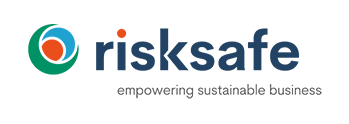Minimize accidents at work and reduce liability risks
Safety and health management systems (SGM systems or OHS-MS – Occupational Health and Safety Management System) are an important tool for minimizing accidents at work and the associated business risks, particularly in view of the ever-increasing time pressure in companies and the often rapidly changing working conditions.
An SGM can be implemented in accordance with ISO 45001 or according to various national or industry-related systems (e.g. SCC) can be set up and certified. It is important that the OHS-MS is adapted to the individual needs of the company and that the system is put into practice and brings about a continuous improvement in accident figures and the health rate. An SGM can be certified by an accredited certifier. Annual external audits must be carried out for this purpose.
Advantages of a (certified) occupational health and safety management system
Advantages of a (certified) SGM
Our offer
We are happy to support you in setting up or optimizing your SGM system.
Our more than 20 years of experience with the introduction and auditing of occupational health and safety management systems enables us to recognize your requirements and needs and adapt the SGM to them. We will be happy to help you set up the system so that it fits your company perfectly.
Introduction of a safety management system
The implementation of an SGM incl. Ideally, certification takes about 6-12 months and essentially consists of the following steps:
If the company already has a high standard in the area of occupational safety, i.e. all legal requirements have already been met in a stable manner for many years, a “safety culture and behavior change project” could also be integrated as part of the ISO 45001 implementation. The purpose of such a project is to further reduce the number of accidents by establishing a safety culture and achieving a change in behavior among employees.
Standards for occupational health and safety management
Standards for SGM
Introduction according to ISO 45001
The introduction of an occupational health and safety management system is usually carried out in accordance with the globally recognized ISO 45001 standard. There are also local systems such as the Austrian AUVA-SGM or the Bavarian OHRIS. The SCC certification (“Safety Certificate Contractors”), which defines a safety standard rather than a management system, is specially tailored to the occupational safety of contractors.
ISO 45001 is an international standard that applies worldwide and can be applied by any organization. It is currently available in the 2018 version. According to ISO 45001, organizations must essentially meet the following requirements:
Certification according to ISO 45001
Certification in accordance with ISO 45001 can be carried out by accredited certification bodies. In Austria, for example, these are Quality Austria, TÜV Süd, TÜV Austria, LRQA or BV.
SCC – Safety Certificate Contractors
SCC is a certifiable occupational health and safety management system that was developed in Holland in the petrochemical industry for companies that want to operate as contractors and combines occupational safety, health and environmental protection (HSE) issues.
The normative SCC regulations include the SCC and SCP checklists. These checklists define the requirements for an SHE management system for obtaining certification in accordance with SCC (Safety Certificate Contractors) or SCP (Safety Certificate Personnel Service Providers). Explanations of special requirements are described in other normative documents. The FVMI working group “Normative SCC documents” is responsible for developing and maintaining the normative SCC regulations.The evaluation of a company is based on the criteria of the SCC checklist or SCP checklist.Although the SCC system is only designed for contractors, the checklist is structured in such a way that it can be easily adopted by all branches of industry.
Questions?
We are happy to support you in setting up or optimizing your SGM system. Our more than 20 years of experience with the introduction and auditing of occupational health and safety management systems enables us to precisely identify your requirements and needs. We will be happy to help you set up the system so that it fits your company perfectly.

